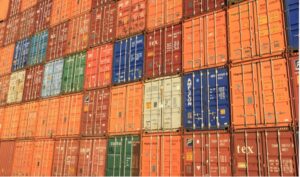China is the world’s largest exporter of goods, with a total value of $2.59 trillion in 2020. If you are an importer who wants to source products from China, you need to consider various factors when choosing a shipping method. In this article, we will discuss the main shipping methods from China, their pros and cons, and some tips for successful shipping.
Factors to Consider When Choosing a Shipping Method

There is no one-size-fits-all solution for shipping from China. Depending on your needs and preferences, you may opt for different shipping methods. Some of the factors that you should consider are:
- Cost: The cost of shipping depends on the weight, volume, distance, and speed of the shipment. Generally, air freight is the most expensive, followed by express courier, sea freight, and rail freight. However, the cost may vary depending on the specific rates and surcharges of the carriers and agents.
- Speed: The speed of shipping refers to the transit time, or how long it takes for the goods to arrive at the destination. Air freight is the fastest, usually taking a few days to a week. Express courier is also fast, taking around a week to 10 days. Sea freight is the slowest, taking several weeks to months. Rail freight is somewhere in between, taking around two to three weeks.
- Reliability: The reliability of shipping refers to the likelihood of the goods arriving on time and in good condition. Air freight and express courier are the most reliable, as they have fewer risks of delays, damages, or losses. Sea freight and rail freight are less reliable, as they are subject to weather, congestion, customs, and other factors that may cause disruptions.
- Capacity: The capacity of shipping refers to the amount of goods that can be shipped at one time. Sea freight has the highest capacity, as it can accommodate large and bulky items. Rail freight also has a high capacity, as it can transport containers and pallets. Air freight and express courier have the lowest capacity, as they are limited by the size and weight of the cargo.
- Environmental impact: The environmental impact of shipping refers to the carbon footprint, or the amount of greenhouse gas emissions, that the shipping method generates. Air freight has the highest environmental impact, as it consumes a lot of fuel and emits a lot of carbon dioxide. Sea freight and rail freight have lower environmental impacts, as they use less fuel and emit less carbon dioxide. Express courier has a moderate environmental impact, as it uses a combination of air and road transport.
Air Freight Shipping from China

Air freight is the shipping method that uses airplanes to transport goods from China to the destination country. Air freight is suitable for:
- Urgent or time-sensitive shipments
- High-value or fragile goods
- Small or lightweight items
- Perishable or seasonal products
The advantages of air freight are:
- Fast and efficient: Air freight is the fastest shipping method, as it can deliver the goods within a few days to a week. This can help you meet tight deadlines, avoid inventory shortages, and satisfy customer demand.
- Safe and secure: Air freight is the safest shipping method, as it has the lowest risk of damages, losses, or thefts. The goods are handled with care and monitored closely by the airlines and customs authorities.
- Flexible and convenient: Air freight is the most flexible shipping method, as it can reach almost any destination in the world. You can also choose from different service levels, such as express, priority, or economy, depending on your budget and urgency.
The disadvantages of air freight are:
- Expensive and variable: Air freight is the most expensive shipping method, as it charges by the weight and volume of the cargo. The cost may also fluctuate depending on the fuel prices, currency exchange rates, and peak seasons. You may have to pay additional fees for insurance, documentation, or customs clearance.
- Limited and restricted: Air freight has the lowest capacity of all shipping methods, as it can only transport small or lightweight items. The goods must also comply with strict regulations and standards, such as the International Air Transport Association (IATA) Dangerous Goods Regulations, which prohibit or limit the shipment of certain items, such as batteries, liquids, or chemicals.
Sea Freight Shipping from China

Sea freight is the shipping method that uses ships to transport goods from China to the destination country. Sea freight is suitable for:
- Large or heavy shipments
- Low-value or durable goods
- Non-urgent or long-term orders
- Standard or regular products
The advantages of sea freight are:
- Cheap and stable: Sea freight is the cheapest shipping method, as it charges by the container or the cubic meter of the cargo. The cost is also relatively stable, as it is less affected by external factors. You can save a lot of money by choosing sea freight, especially for bulk or long-distance shipments.
- High and versatile: Sea freight has the highest capacity of all shipping methods, as it can accommodate large and bulky items. You can also choose from different types of containers, such as dry, refrigerated, or open-top, depending on the nature and size of your goods.
- Eco-friendly and sustainable: Sea freight has a lower environmental impact than air freight, as it uses less fuel and emits less carbon dioxide. Sea freight also supports the global trade and development, as it connects different markets and regions.
The disadvantages of sea freight are:
- Slow and unpredictable: Sea freight is the slowest shipping method, as it can take several weeks to months to deliver the goods. The transit time may also vary depending on the weather, congestion, customs, or other factors that may cause delays or disruptions. You may have to plan ahead and adjust your inventory accordingly, as sea freight is not suitable for urgent or time-sensitive shipments.
- Risky and complex: Sea freight is the riskiest shipping method, as it has the highest chance of damages, losses, or thefts. The goods are exposed to various hazards, such as water, humidity, or pests. You may also have to deal with complex procedures and documentation, such as the bill of lading, the packing list, or the certificate of origin. You may need to hire a freight forwarder or a customs broker to help you with the logistics and clearance.
Express Courier Shipping from China

Express courier is the shipping method that uses courier companies, such as DHL, FedEx, or UPS, to transport goods from China to the destination country. Express courier is suitable for:
- Small or lightweight shipments
- High-value or fragile goods
- Urgent or time-sensitive shipments
- E-commerce or online orders
The advantages of express courier are:
- Fast and reliable: Express courier is one of the fastest shipping methods, as it can deliver the goods within a week to 10 days. Express courier is also one of the most reliable shipping methods, as it has a high rate of on-time delivery and a low rate of damages, losses, or thefts. The goods are tracked and traced throughout the whole process, and you can receive notifications and updates on the status of your shipment.
- Simple and convenient: Express courier is one of the simplest shipping methods, as it offers a door-to-door service. You do not have to worry about the logistics or the customs, as the courier company will handle everything for you. You can also enjoy various benefits, such as online booking, payment, and tracking, free packaging, and customer service.
The disadvantages of express courier are:
- Expensive and variable: Express courier is one of the most expensive shipping methods, as it charges by the weight and volume of the cargo. The cost may also fluctuate depending on the fuel prices, currency exchange rates, and peak seasons. You may have to pay additional fees for insurance, documentation, or customs clearance.
- Limited and restricted: Express courier has a low capacity of all shipping methods, as it can only transport small or lightweight items. The goods must also comply with strict regulations and standards, such as the International Civil Aviation Organization (ICAO) Technical Instructions, which prohibit or limit the shipment of certain items, such as batteries, liquids, or chemicals.
Rail Freight Shipping from China

Rail freight is the shipping method that uses trains to transport goods from China to the destination country. Rail freight is suitable for:
- Medium or large shipments
- Low-value or durable goods
- Non-urgent or long-term orders
- Landlocked or remote destinations
The advantages of rail freight are:
- Cheap and efficient: Rail freight is cheaper than air freight and express courier, and more efficient than sea freight. Rail freight charges by the container or the ton of the cargo, and the cost is relatively stable. Rail freight can also save time and energy, as it avoids the congestion and pollution of road transport.
- High and flexible: Rail freight has a high capacity of all shipping methods, as it can transport containers and pallets. Rail freight is also flexible, as it can connect with other modes of transport, such as sea, air, or road. You can choose from different routes and services, such as the China-Europe Railway Express, which links China with Europe via Central Asia and Russia.
- Safe and secure: Rail freight is safer than sea freight and road transport, as it has a lower risk of damages, losses, or thefts. The goods are handled with care and monitored closely by the railway authorities and customs. Rail freight also has a lower environmental impact than air freight and road transport, as it uses less fuel and emits less carbon dioxide.
- Slow and unpredictable: Rail freight is slower than air freight and express courier, as it can take two to three weeks to deliver the goods. The transit time may also vary depending on the weather, congestion, customs, or other factors that may cause delays or disruptions. You may have to plan ahead and adjust your inventory accordingly, as rail freight is not suitable for urgent or time-sensitive shipments.
- Complex and limited: Rail freight is complex, as it involves multiple parties and procedures, such as the railway operators, the freight forwarders, the customs brokers, and the customs authorities. You may have to deal with complex documentation and regulations, such as the railway bill of lading, the packing list, or the certificate of origin. Rail freight is also limited, as it can only reach destinations that have rail connections. You may have to use other modes of transport, such as road or sea, to complete the delivery.
Comparison of Shipping Methods: Pros and Cons
To help you choose the best shipping method for your needs, here is a summary table that compares the pros and cons of each shipping method:
Table
| Shipping Method | Cost | Speed | Reliability | Capacity | Environmental Impact |
|---|---|---|---|---|---|
| Air Freight | High | Fast | High | Low | High |
| Sea Freight | Low | Slow | Low | High | Low |
| Express Courier | High | Fast | High | Low | Moderate |
| Rail Freight | Low | Moderate | Moderate | High | Low |
Customs and Import Regulations

No matter which shipping method you choose, you have to comply with the customs and import regulations of both China and the destination country. Customs and import regulations are the rules and requirements that govern the import and export of goods, such as the tariffs, taxes, duties, quotas, licenses, permits, certificates, or inspections. Customs and import regulations may vary depending on the type, value, origin, and destination of the goods.
Some of the common customs and import documents that you may need are:
- Commercial invoice: A document that shows the details of the transaction, such as the seller, the buyer, the description, the quantity, the price, the terms of payment, and the terms of delivery of the goods.
- Packing list: A document that shows the details of the packaging, such as the weight, volume, dimensions, marks, and numbers of the packages and the goods.
- Bill of lading: A document that shows the details of the shipment, such as the carrier, the consignor, the consignee, the origin, the destination, the mode of transport, and the delivery date of the goods. The bill of lading also serves as a receipt and a contract of carriage of the goods.
- Certificate of origin: A document that shows the origin of the goods, or where the goods were produced or manufactured. The certificate of origin may be required to determine the applicable tariffs, taxes, duties, or quotas of the goods.
- Certificate of inspection: A document that shows the results of the inspection of the goods, or whether the goods meet the quality, quantity, or safety standards of the destination country. The certificate of inspection may be required to ensure the compliance and conformity of the goods.
You may also need other documents, such as the insurance policy, the export license, the import permit, or the health certificate, depending on the nature and destination of your goods. You may also have to pay certain fees, such as the customs clearance fee, the terminal handling fee, the documentation fee, or the value-added tax, depending on the mode of transport and the destination country.
To avoid any delays, penalties, or confiscations, you should prepare all the necessary documents and fees in advance, and declare your goods accurately and honestly. You should also check the customs and import regulations of both China and the destination country before shipping, as they may change from time to time. You may also consult a professional freight forwarder or a customs broker to help you with the customs and import process.
Tips for Successful Shipping from China

Shipping from China can be a challenging and rewarding experience, as it involves many factors and decisions. To help you make the most of your shipping from China, here are some tips that you should follow:
- Do your research: Before you start shipping from China, you should do your research on the products, the suppliers, the markets, and the regulations. You should find reliable and reputable suppliers who can provide you with high-quality and competitive products. You should also understand the demand and preferences of your target market, and the customs and import regulations of your destination country.
- Plan your budget: Shipping from China can be costly, as it involves various fees and charges. You should plan your budget carefully, and consider all the possible expenses, such as the product cost, the shipping cost, the insurance cost, the customs cost, and the taxes. You should also compare different shipping methods and service providers, and choose the one that offers the best value for your money.
- Choose your shipping method: Shipping from China can be done by different shipping methods, such as air freight, sea freight, express courier, or rail freight. You should choose the shipping method that suits your needs and preferences, based on the factors such as the cost, the speed, the reliability, the capacity, and the environmental impact. You should also consider the advantages and disadvantages of each shipping method, and the customs and import regulations of your destination country.
- Track your shipment: Shipping from China can be unpredictable, as it may encounter various risks and uncertainties. You should track your shipment regularly, and monitor its status and location. You should also communicate with your supplier, your carrier, your freight forwarder, your customs broker, and your customer, and keep them updated on the progress and problems of your shipment. You should also prepare for any contingencies, such as delays, damages, losses, or thefts, and have a backup plan in case of emergencies.




